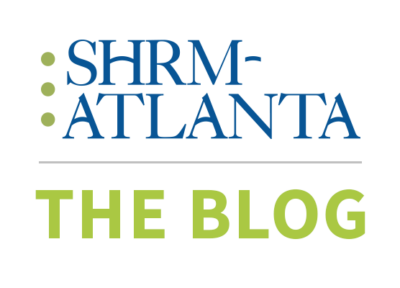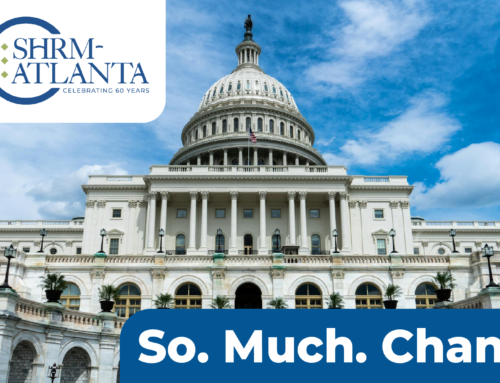Sponsored Article from Candace Jackson, CPA of Moore Colson
Throughout the summer of 2021, the Internal Revenue Service (IRS) and Department of Labor (DOL) have remained active. Much of the activity we saw in 2020 was related to COVID-19 relief and other reactions to the ever-changing pandemic. This year, the DOL has been especially active in the area of cybersecurity, as we shared in a previous blog post. Since then, the IRS has provided a long-awaited update to the Employee Plans Compliance Resolution System (EPCRS), and also has plans to update Form 5500 and, potentially, audit requirements.
EPCRS Updates
This summer, the IRS issued Revenue Procedure (Rev. Proc.) 2021-30, which updates the EPCRS, its comprehensive system of correction programs for retirement plan sponsors.
EPCRS permits plan sponsors to correct plan and operational failures and continue to provide their employees with retirement benefits on a tax-favored basis. The EPCRS includes the Self Correction Program (SCP), Voluntary Correction Program (VCP) and Audit Closing Agreement Program (Audit CAP). The new Revenue Procedure updates the previous Rev. Proc. 2019-19 to:
- Expand guidance on the recoupment of overpayments of a defined benefit (DB) plan. No recoupment may be necessary, depending on the plan’s funding level.
- Eliminate the anonymous submission procedure under VCP, effective January 1, 2022. Unfortunately, this appears to be the one downside to the new EPCRS as some plan sponsors used to be able to propose alternative correction methods anonymously for approval. This procedure will no longer be possible.
- Add an anonymous, no-fee, VCP pre-submission conference procedure, effective January 1, 2022.
- Extend the end of the SCP correction period for significant failures by one year. The SCP will now be available for significant errors corrected by the last day of the third plan year (previously the second) following the plan year for which the failure occurred.
- Expand the ability of a plan sponsor to correct an operational failure under SCP by plan amendment. This correction method is now available in certain instances if the plan amendment would increase a benefit, right or feature, and it no longer requires all participants to benefit.
- Extend the sunset of the safe harbor correction method available for certain employee elective deferral failures associated with missed elective deferrals for eligible employees who are subject to an automatic contribution feature in a 401(k) plan or 403(b) plan. The three-year extension moves the sunset date from December 31, 2020 to December 31, 2023. If the failure is corrected within the first 9 ½ months of the plan year following the plan year of the failure, an employer qualified nonelective contribution is not required.
Benefit plan administration is complex, and errors are common. These updates increase the ability to self-correct errors, which is a welcome option for plan sponsors, auditors and attorneys.
Form 5500 Proposed Changes*
In September 2021, the DOL, IRS and Pension Benefit Guaranty Corporation (PBGC) released proposed changes to Form 5500. Several of these updates related to changes in the Setting Every Community Up for Retirement Enhancement (SECURE) Act, which require sponsors of Multiple Employer Plans to report a new data element and sponsors of Pooled Employer Plans (PEP) to identify pooled plan providers. The SECURE Act also allows for a single consolidated annual report to be filed on behalf of certain groups of defined contribution plans.
To allow for appropriate reporting, the agencies may create new schedules, which include Schedule MEP – Multiple Employer Pension Plan and Schedule DCG (defined contribution group) – Individual Plan Information. The Schedule MEP would allow for reporting of each participating employer’s contributions and aggregated account balances. Part III of the proposed schedule contains PEP-specific disclosures. The SECURE Act also proposed a new reporting arrangement that allows plans with the same trustee, trust, named fiduciaries, plan administrator, plan year and investment or investment options to file one Form 5500. Each participating plan sponsor would then file a Schedule DCG to report individual plan level information.
The IRS also proposed adding questions to Form 5500 to help identify plans that fail to meet coverage and nondiscrimination testing requirements.
Potential Eligibility Methodology Changes*
Currently, the audit threshold is determined based on participant counts as of the beginning of the plan year, including employees eligible to make elective deferrals even if they have elected not to participate and do not have an account balance in the plan. The agencies now propose that participant counts only include those employees who have account balances at the beginning of the plan year. The change is driven in part
by the SECURE Act’s provision that allows long-term part-time employees to make elective deferrals, thus increasing the number of eligible participants, potentially pushing small plan filers over the audit threshold. If approved, this change would take effect on January 1, 2022.
Final Thoughts
Pressure from Capitol Hill and a lack of enforcement resources appear to be leading to a positive shift in the agencies. The expanded self-correction windows and retirement plan options under the SECURE Act will hopefully be a driving force to lower the cost of administration and draw more companies into offering these benefits to their employees. If you have questions about how these updates and proposed changes may impact your employee benefit plan administration, don’t hesitate to contact Moore Colson for more information.
*It is important to note that the Form 5500 updates and changes to the audit threshold are only proposed at this time. The agencies plan to make a final decision by the end of the year, taking into consideration the comment letters provided by practitioners, associations and companies through November 1, 2021. If approved, these changes would apply to plan years beginning on or after January 1, 2022 (except for MEP reporting, which would apply on or after January 1, 2021). Plan sponsors and practitioners should watch for announcements on further developments
 Candace Jackson, CPA
Candace Jackson, CPA
Candace Jackson, CPA, is a Partner in Moore Colson’s Business Assurance Practice. Candace manages audit and review teams and serves as a practice area leader in the firm’s Employee Benefit Plan practice. With over 13 years of experience with employee benefit plans, Candace serves both public and private company plans to ensure compliance with reporting requirements and advise on plan operations. She annually assists clients with 401(k), 403(b), pension, ESOP, and health and welfare plans.
Candace’s professional background in public accounting, along with her strong interpersonal and team-oriented skills, complement Moore Colson’s already diversified Business Assurance team. In addition to her expertise in employee benefit plan audits, Candace also has extensive experience serving clients in the transportation, distribution and services industries.
Moore Colson is the business advisor of choice for any company seeking thoughtful financial and strategic guidance. That’s why since 1981, family-owned businesses and Fortune 500 corporations alike have trusted us with their accounting and consulting needs. And unlike most firms, we use a true partnership model, which means every client has access to our entire team of experts. A nationally-recognized firm, Atlanta-based Moore Colson has the experience and personal touch to shape your future and help your company grow. Learn more at MooreColson.com.





